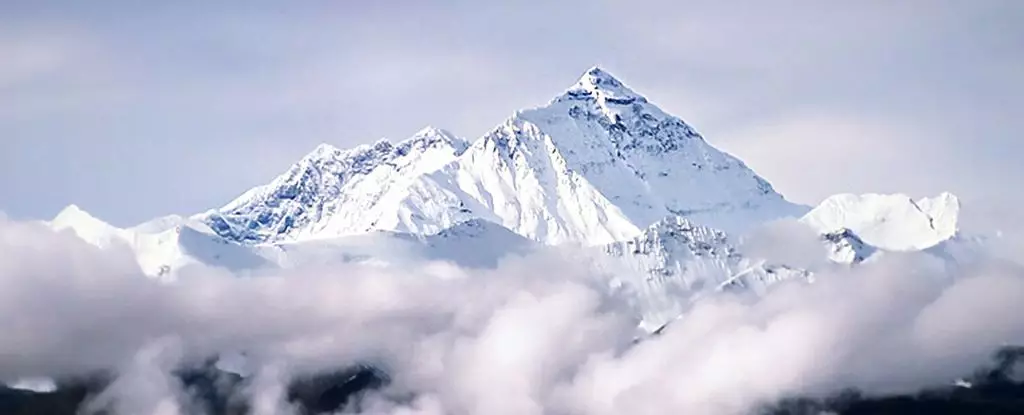Mount Everest, revered as the pinnacle of terrestrial achievement, attracts adventurers and scientists alike, enticing them with both its daunting summit and the secrets it holds. Recent research has sparked a new understanding of what contributes to Everest’s extraordinary height of 8,849 meters. While tectonic activity has long been acknowledged as the principal driver behind mountainous formations, a concept termed “geological piracy,” involving the capture of river systems, may play a more significant role in reshaping the peak’s elevation than previously thought.
The formation of the Himalayas is often credited to the relentless collision of tectonic plates, where the Indian plate crashes against the Eurasian plate. This geophysical interaction has created a high relay of mountains, making the Himalayas distinctive on a global scale. Yet, it begs the question: why does Everest rise so prominently above its closest competitors? Most surrounding peaks stand within a hundred meters of one another, contrasting with Everest’s startling elevation that surpasses them by a striking 250 meters. This discrepancy in height suggests hidden mechanisms at work beneath the Earth’s surface, beyond mere tectonic forces.
The term “geological piracy” refers to a phenomenon that occurs when one river captures the flow of another, diverting water and sediment which significantly alters the erosion processes in the terrain. The recent study led by a collaborative team from the China University of Geosciences and University College London proposes that this process has been foundational to augmenting Everest’s stature. By examining the dynamic interactions of rivers in the region, especially the Arun River, researchers believe they have uncovered a compelling storyline that integrates hydrology with geology.
The Arun River serves as a keen focal point for this investigation due to its significant elevation drop and swift erosion capabilities. Models suggest that around 89,000 years ago, the Arun began siphoning water away from its parent river, the Kosi. This sudden influx of water potentially amplified the river’s erosive power, enabling it to carve a profound gorge through solid rock with remarkable effectiveness. The implications of this ‘supercharged’ water flow could reverberate through the geology of the region, creating ripples of change.
As erosion progressed, the dynamics of the Earth’s crust were altered; it began to respond to the significant removal of material caused by the erosive forces of the fast-flowing Arun. When large volumes of rock are displaced, the buoyant crust, which rests atop the mantle, can rebound and ascend, leading to an increase in elevation of the surrounding mountain ranges, including Everest. This geological reaction has been theorized to contribute between 15 and 50 meters to Mount Everest’s current height.
Furthermore, researchers estimate that the incision rate resulting from the Arun’s accelerated flow was so impactful that it continues to influence the growth of Everest even to this day, with calculations suggesting a steady uplift of approximately 0.53 millimeters each year. Such findings compel us to appreciate the intertwined narratives of hydrology and geology; how rivers—often seen simply as passive features of landscapes—can actively sculpt and elevate the very mountains they flow around.
The intriguing notions of river drainage piracy challenge conventional wisdom regarding mountain formation. While tectonic forces undoubtedly shape the Himalayas, the interplay with river systems adds another layer to our understanding of how these monumental peaks achieve their heights. This fascinating research not only sheds light on the continuous evolution of Everest but also reshapes our perspective on the relationships between geological processes and water bodies.
As we refine our comprehension of such monumental landscapes, it is evident that geological science remains a dynamic field, unveiling the various forces that govern our planet’s topography. As researchers pursue these questions further, we may find that the stories hidden beneath the surfaces of natural wonders like Mount Everest are more intricate and awe-inspiring than we could have ever imagined.


Leave a Reply